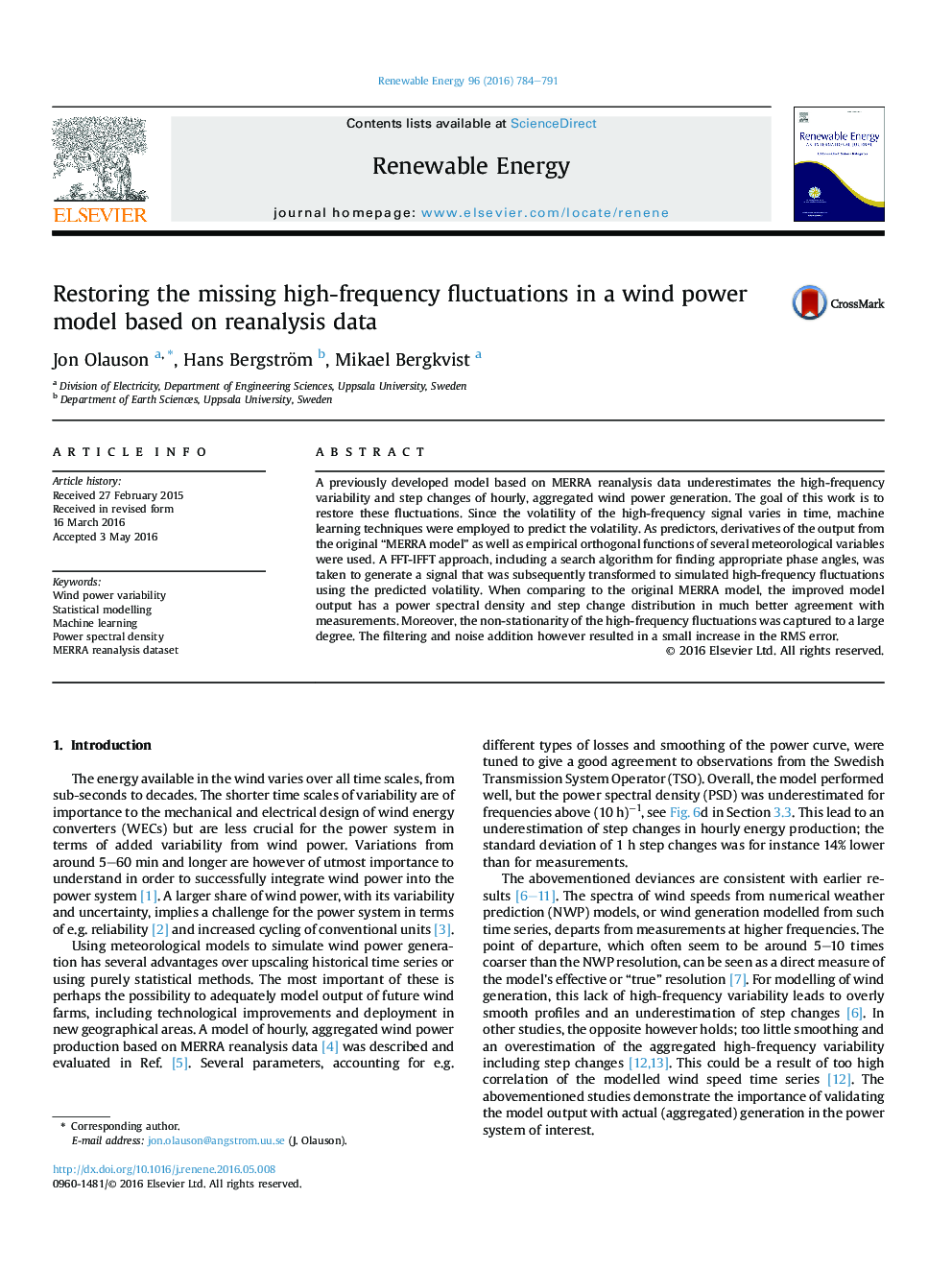| Article ID | Journal | Published Year | Pages | File Type |
|---|---|---|---|---|
| 10293918 | Renewable Energy | 2016 | 8 Pages |
Abstract
A previously developed model based on MERRA reanalysis data underestimates the high-frequency variability and step changes of hourly, aggregated wind power generation. The goal of this work is to restore these fluctuations. Since the volatility of the high-frequency signal varies in time, machine learning techniques were employed to predict the volatility. As predictors, derivatives of the output from the original “MERRA model” as well as empirical orthogonal functions of several meteorological variables were used. A FFT-IFFT approach, including a search algorithm for finding appropriate phase angles, was taken to generate a signal that was subsequently transformed to simulated high-frequency fluctuations using the predicted volatility. When comparing to the original MERRA model, the improved model output has a power spectral density and step change distribution in much better agreement with measurements. Moreover, the non-stationarity of the high-frequency fluctuations was captured to a large degree. The filtering and noise addition however resulted in a small increase in the RMS error.
Related Topics
Physical Sciences and Engineering
Energy
Renewable Energy, Sustainability and the Environment
Authors
Jon Olauson, Hans Bergström, Mikael Bergkvist,
